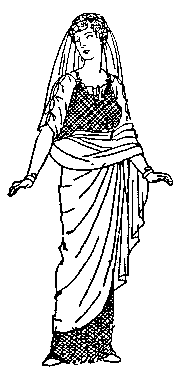top of page
Roman Life
Click on the pictures for more information.
Structures
Architectural Structures
An aqueduct is a bridge-like structure that carried water to the Roman cities.
A circus is a race track for horse drawn chariots. Thousands of Roman citizens came to watch the races.
An amphitheatrum is a massive arena used for combat between gladiators, animals, and ships.
A curia is a building in the Roman Forum that was capable of holding 600 senators. There was no speaker platform. A senator desiring to speak needed to stand in place - as we often see in the U.S. Senate today.
A basilica is a large public meeting space that in many ways resembled a modern church. It was used by judges as a courtroom, by teachers as a classroom, and by politicians as a place to give speeches.
The thermae was a public bath designed for relaxation and social time. A person started in apodetyrium where they undressed. Then they were covered in oil before going to the courtyard to rigorously exercise. Next they would go to the calidarium - the hot pools, then to the tepidarium - the warm room, and last to the frigidarium - the cold pools.
City of Rome
City of Rome
The forum is in the center of the city. People met there to do business, meet friends, sell and buy things, find out about the news, and sometimes go to school. Fancy buildings such as temples and basilicas, and sometimes shops were on its perimiter. It also had a platform called The Rostra where people made speeches.
The Circus Maximus is where Roman chariot races took place. It was considered a family event because the races did not contain some of the gore that the Colosseum did.
The Colosseum is the most famous Roman amphitheatrum. It was known for its gruesome events. Gladiator fights and animal hunts would take place. These shows were free, and bread was served to keep the citizens happy.
Palatine Hill is the centermost of the seven hills of Rome. It stands 40 meters above the forum. Looking down you can see the forum and the Circus Maximus on each side.
The Via Appia was one of the most important roads in Rome. It connected Rome to Brindisi and was a maine route for military supplies. It was the first long road built specifically for transporting outside the smaller region of greater Rome.
The Pantheon is a temple dedicated to the Roman gods. Its architectural design has been copied throughout the ages.
The Campus Martius was a publicly owned area of ancient Rome that was about two square kilomoters long. It translates to "field of mars". Events around Campus Martius were significant to Roman culture, such as Equirria, which were horses races.
Housing
Roman Household
The Roman insula is an urban apartment house inhabited by lower and middle class citizens.
The villa is a farmhouse.
The vestibulum is the entrance to the house.
The center hall of the house is called an atrium, which didn't have a roof so it could be open to the weather. There was often a small pool at the bottom, and an altar with statues of household gods as well.
The cubiculum is the bedroom.
The triclinium is the dining room where guests can eat and recline.
The peristylum is a second courtyard that usually contains a garden.
The tabernae are the shops.

Roman Family
mater - mother
pater - father
filius - son
filia - daughter
servus - slave
paedogogus - a slave that accompanied a child to school
Meals
Meals
The cena is the main meal of the day. It was at first held in midday but later began to be held in the evevning.

The culina is the the kitchen of the household.
Clothing
Clothing
Men traditionally wore togas.
Women traditionally wore stolas.

A tunic is traditional garment that can be worn by women, men and slaves.
Test Prep
bottom of page

















